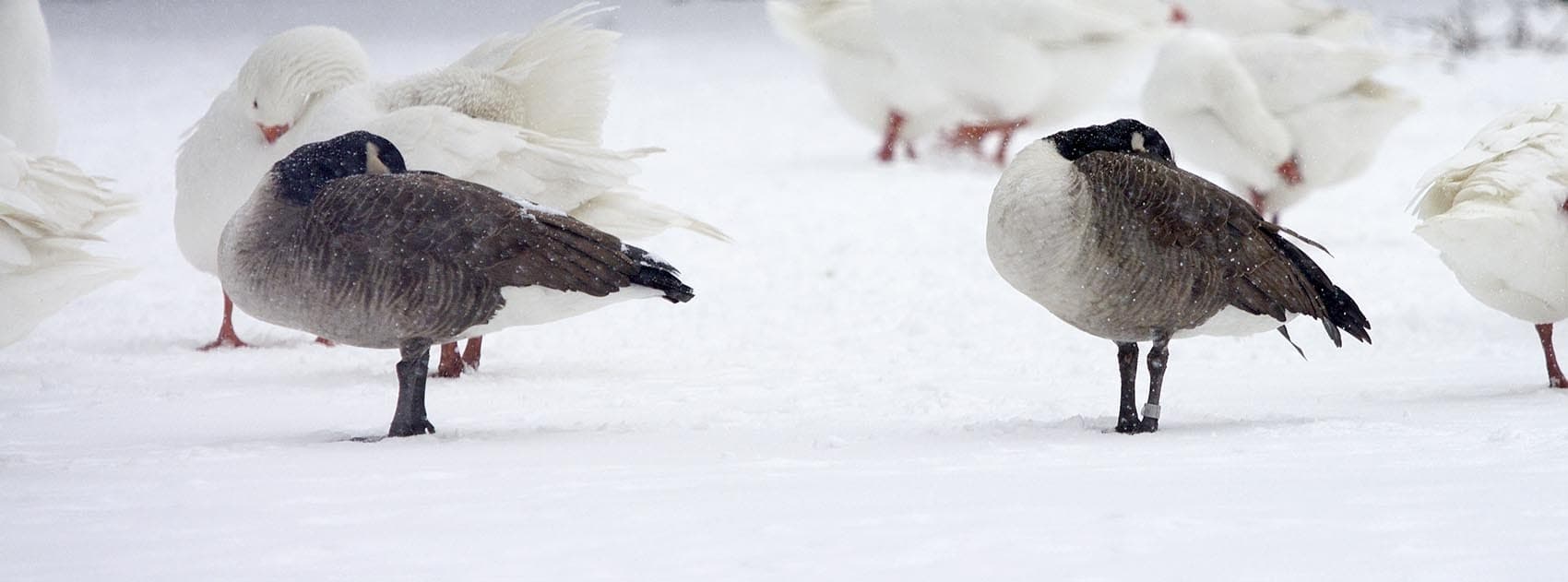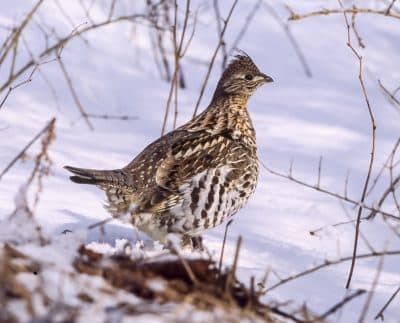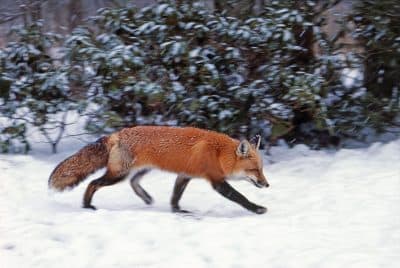Advertisement
How Wildlife Handles Cold Weather That Won't Quit

When we mere humans are standing outside bundled from head to toe and wincing in the wind, it may seem amazing — even troublesome — that the woodland creatures around us can bear the cold all day without so much as a pair of mittens.
But Marion Larson, education chief at the Massachusetts Division of Fisheries & Wildlife, says you don't need to worry about how they're faring, even in the longest stretch of weather this cold since 1918.
"The wildlife in New England has survived cold winters for thousands of years," she says. "They have got a whole lot of different tricks up their sleeves — as it were — in surviving cold winters [and] cold snaps."
For those critters that haven't fled south, there's hibernation, natural insulation, winter-grade coats and feathers, conserving energy and fattening up.
Here's how the animals in your neighborhood are doing winter better than you:
Birds And Beavers
Larson says you might notice that birds in your backyard look a little more round.
"They're literally fluffing their feathers out," she says. "They've got their built-in down coats and just the more air you trap in there, the body heat keeps you warm and keeps you insulated."
The ruffed grouse goes a step further by using snow as an insulator, building little tunnels or igloos.

Larson says ducks and geese are real interesting, because they manage to get wet and float on without getting cold. They are protected by a doubled-layered plume: they have down feathers close to their body as well as longer, oily feathers that keep moisture from soaking in.
Semi-aquatic animals, like beavers or otters, have a similar kind of jacket: a slick, greased coat on the outside and dense fur underneath.
"That's what I'd call their long underwear," says Larson. "That's the crucial layer."
And, where waterfowl don't have feathers, a network of veins carries warm blood down "kind of an express lane" to their feet, says Larson.
"We don't have that same kind of situation in our human physiology," Larson explains. "Our feet are freezing. Theirs are not."
While they stay naturally warmer, birds are also looking for food — all while conserving energy. And they're not alone.
Advertisement
Featherless Friends
You probably know about hibernation — a common tool for bears, chipmunks and woodchucks. But not every animal fattens up just to find shelter and go to sleep.
Those that are still seeking a bite will keep scavenging, but slow way down.
"For many animals, if you had a Fitbit on them in the wintertime, the number of steps that they take would be a dramatic decrease," says Larson. "They are trying to stay put, to conserve energy, stay warm, keep those fat reserves to help them get through the winter if they can't find enough food."
That's why you shouldn't be concerned if you see a deer laying down under an evergreen. Larson says that deer or moose get a heavier coat in the winter, and the hair is hollow. Like birds, they use air to insulate their bodies.

"All the mammals have grown some kind of a winter coat," she says. "We get calls from people saying 'oh, I've just seen a huge coyote. I think it's a wolf. I've never seen anything like that. In the summertime they look skinny and scrawny. It must be a wolf.' No it's a coyote, but it has its winter fur and that winter fur is a lot heavier."
You might see some of these predators, like coyotes and foxes, more often. They're hunting and scavenging, as food is scarcer in the winter.
Even with cold, says Larson "it's not as terrible as we might think it is for them because of those adaptations."
Wildlife Probably Doesn't Need Your Help
Larson says that while a rabbit might appreciate taking shelter under your shed, you shouldn't feed the animals. Leaving out food could spread disease or cause animals to get aggressive due to crowding.
And with deer, for example, their body naturally adapts to winter food. When they are fed hay or corn in the winter, they can't digest it.
The Massachusetts Division of Fisheries and Wildlife even made this video urging people not to feed the deer:
Larson says the best thing to do is to plant something animals would interact with naturally. Grow evergreen trees that they can take shelter underneath or plant seed- and nut-bearing bushes.
"That kind of action is much more helpful because that's their natural food," she says. "They know what to do with it, and you're not creating a situation where you're drawing in crowds."
And though it might be too chilly for a stroll today, winter is actually not a bad time to see wildlife. Larson points to bald eagles, snowy owls and seals as some species you might see more often in the chillier months, showing off their excellent adaptations.

